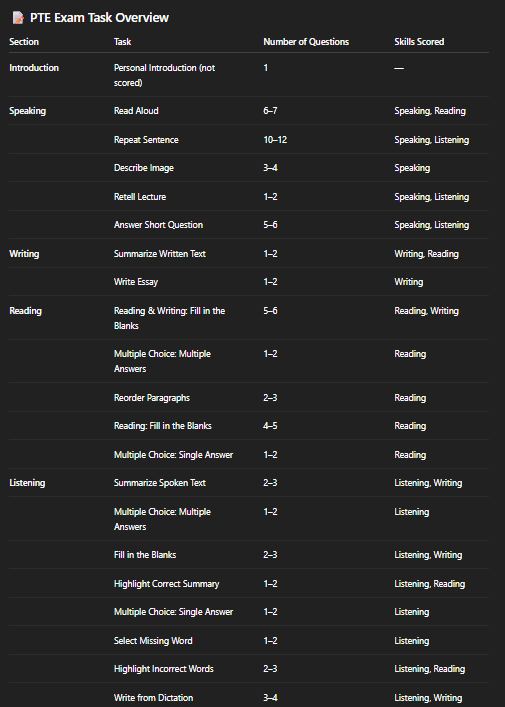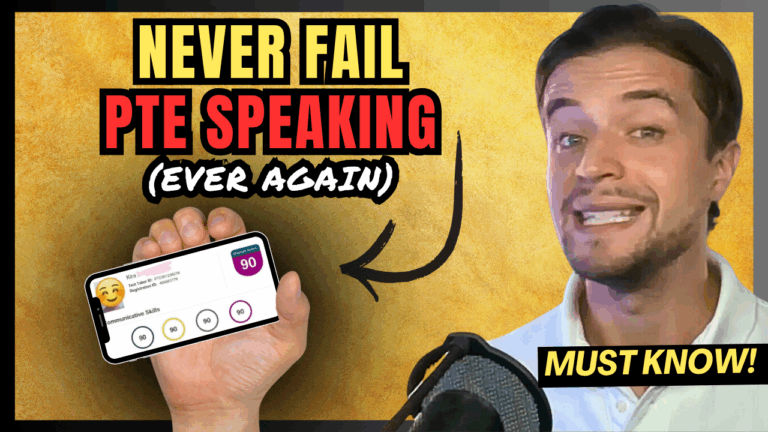PTE Speaking: Read Aloud Tips and Tricks (2025): The Ultimate Guide for a 90 Score
PTE Speaking Read Aloud Tips and Tricksr
If you’re aiming for a high score in PTE, let me tell you a secret: the very first question you face, Read Aloud, is one of the most important in the entire exam. Getting this right sets you up for success, while getting it wrong can damage your score before you’ve even started.
Many students think this task is simple- just read a paragraph. But they practice for weeks and still get a low score, leaving them frustrated and confused.
Why? Because they don’t understand what the PTE scoring AI is really listening for.
Today, we’re going deep. Forget the generic advice. This is the ultimate guide to mastering Read Aloud, based on the proven strategies we teach our 79+ scoring students. We’ll cover the biggest mistakes that are killing your score and give you the practical tips to fix them.
Why PTE Read Aloud is Critical for Your Speaking & Reading Score
First, you need to understand the stakes. Read Aloud isn’t just a speaking task. It’s a powerhouse that gives you marks in TWO sections at once.
- It gives you a huge portion of your marks for the PTE Speaking section.
- It gives you a massive chunk of marks (around 30-35) for the PTE Reading section.
If you don’t perform well here, you might fail your Reading section before you even get to it. That’s why we tell our students to send us audios of this task every single day- it’s that critical.
Understanding the PTE 2025 AI Marking: Why Oral Fluency Beats Pronunciation
Here’s the number one reason students get a low speaking score: they focus too much on perfect pronunciation and not enough on Oral Fluency.
The computer doesn’t understand your perfect accent. But it is an expert at detecting pauses, hesitations, and inconsistent speed. As long as you keep talking smoothly and continuously, your fluency score will be very high. This is more important than perfect pronunciation. A student with a terrible 33/90 in Pronunciation can still get an 82 in Speaking because their Fluency was perfect.
To get a PTE 90 score, you must train yourself to “beat” the AI by giving it the fluency it wants.
3 Fluency Mistakes That Lower Your PTE Speaking Score
Mistake #1: Pausing at Commas and Full Stops
When we read normally, we pause for punctuation. In PTE, this is a trap. The computer interprets every pause, no matter how small, as a lack of fluency.
- Your Strategy: For short sentences, read the entire thing in one go, taking a quick breath only at the full stop. For longer sentences, take a quick breath somewhere in the middle, but never pause deliberately for a comma.
Mistake #2: Inconsistent Speed (The “Gas-Brake” Problem)
Many students read easy words very fast, but then slam on the brakes for difficult words. This “fast-slow-fast-slow” delivery is a disaster for your fluency score.
- Your Strategy: As we say in our classes, think of it like driving on a highway; you maintain a steady pace, you don’t go “gas-break, gas-break.” Aim for a speed that is slightly faster than your normal conversation (about a 6-7 out of 10), but one that you can maintain consistently.
Mistake #3: Over-Emphasizing Words (The “Staccato” Effect)
Trying to sound like a news anchor by putting strong emphasis on certain words can also hurt your score. The PTE scoring guide refers to this as “staccato” and considers it an irregularity.
- Your Strategy: Adopt a more neutral, almost “robotic” tone. The goal is a smooth, continuous flow. Think of your voice as “scooping water,” not “chopping onions.”
3 Content Mistakes That Hurt Your PTE Score from Read Aloud
While fluency gets you Speaking points, the words you actually say get you Reading points. Here are the content mistakes to avoid.
Mistake #4: Correcting Yourself
When you fumble a word, your first instinct is to stop and correct it. This is a huge mistake. By correcting one error, you intentionally create three or four new ones: a pause, a repeated word, another pause, and a loss of fluency.
- Your Strategy: If you make a mistake, you keep going. Mumble through the word and immediately move to the next one as if nothing happened. Sacrificing one word to maintain your flow is always the right choice.
Mistake #5: Misreading Contractions and Endings
The AI is unforgiving. If the text says “things” and you say “thing,” it’s a mistake. If the text says “you’ve” and you read “you have,” it’s a mistake. These small errors add up, so be very careful to read every word exactly as it is written.
Mistake #6: Panicking on Hard Words
Seeing a long, difficult word like “persuasiveness” can make you freeze.
- Your Strategy: Don’t be a hero. During your 35-second preparation time, identify hard words and decide on a replacement before you start recording. You can either say something that sounds similar (like saying “codes” instead of “quotes”) or just say the word “something” and move on without breaking your flow.
Your 90/90 PTE Read Aloud Strategy: Tips & Tricks
- Prep Out Loud: Don’t just read in your head during the 35-second prep time! Read the entire text out loud to find the tricky words and practice them. This is crucial because, as I say in my classes, you might sound like Justin Timberlake in your head, but what comes out of your mouth can be a different story.
- Use Your Finger as a Pacer: When you read, trace under the words with your finger. This acts like a metronome, forcing you to maintain a steady, consistent pace.
- Breathe Correctly: If you don’t take enough breaths, your voice loses power and the AI can’t recognize your words. Take tiny, quick breaths between phrases or at full stops to keep your voice strong and clear.
- Click “Next” Immediately: As soon as you finish the last word, click the “Next” button within one or two seconds. Waiting allows background noise to be picked up, which the AI will register as a pause.
Mastering Read Aloud isn’t about having perfect English; it’s about mastering a technique. By focusing on fluency and following these practical steps, you can turn this challenging task into one of your highest-scoring sections.
Good luck with your Read Aloud practice!
Alex 🙂
PS: Ready to Test Your Read Aloud Skills?
Now that you know the theory, the only way to improve is to practice. The Dream English platform has hundreds of Read Aloud questions where you can record your voice and get an instant AI score for both your fluency and content.
It’s the perfect tool to see if you’re making these common mistakes and to track your improvement.
👉 Access Our Full Bank of Real Exam Questions + AI-Scored Mock Tests at: https://platform.dreamenglish.com.au
You might find this video from our YouTube Channel useful:







